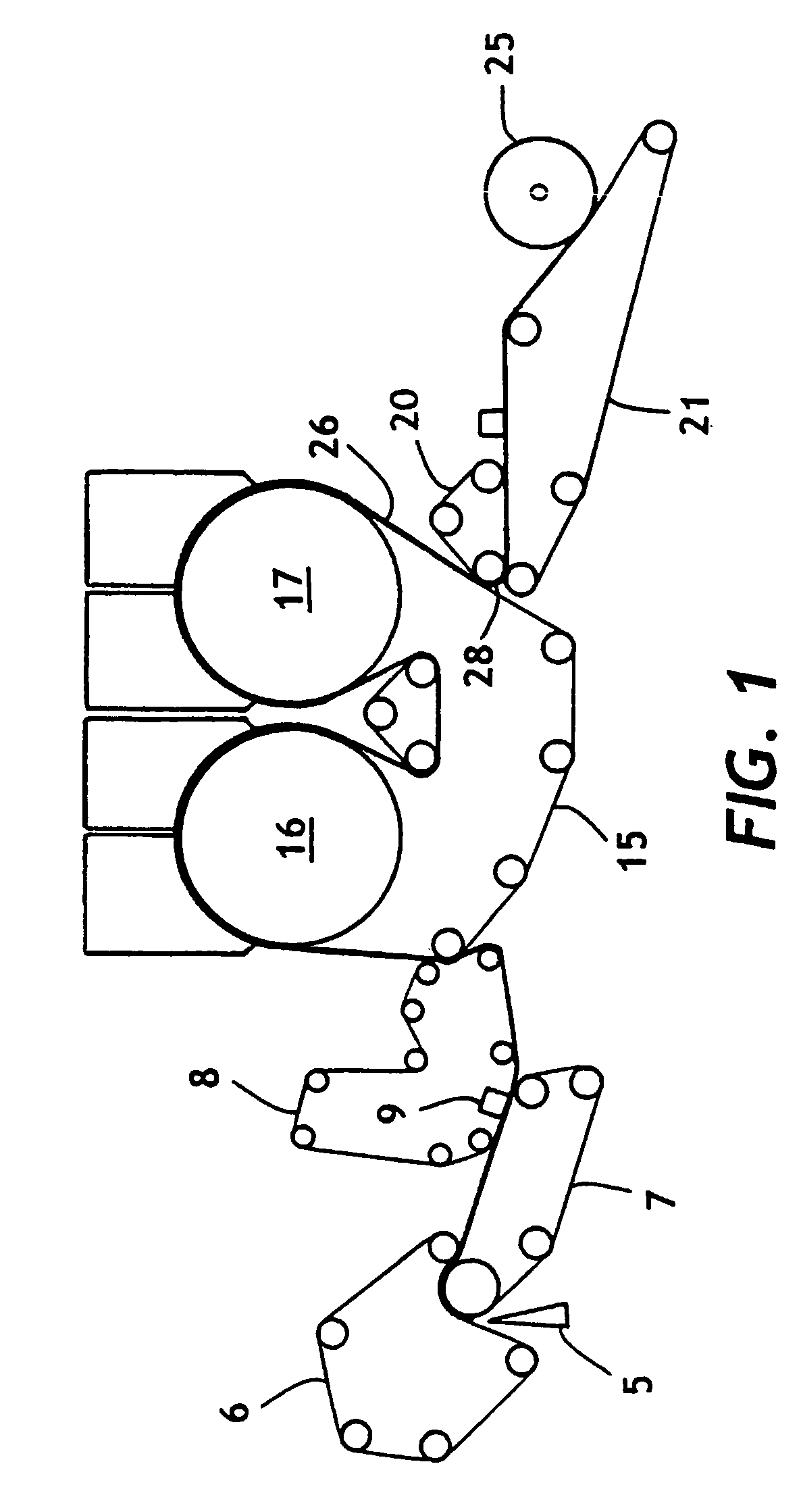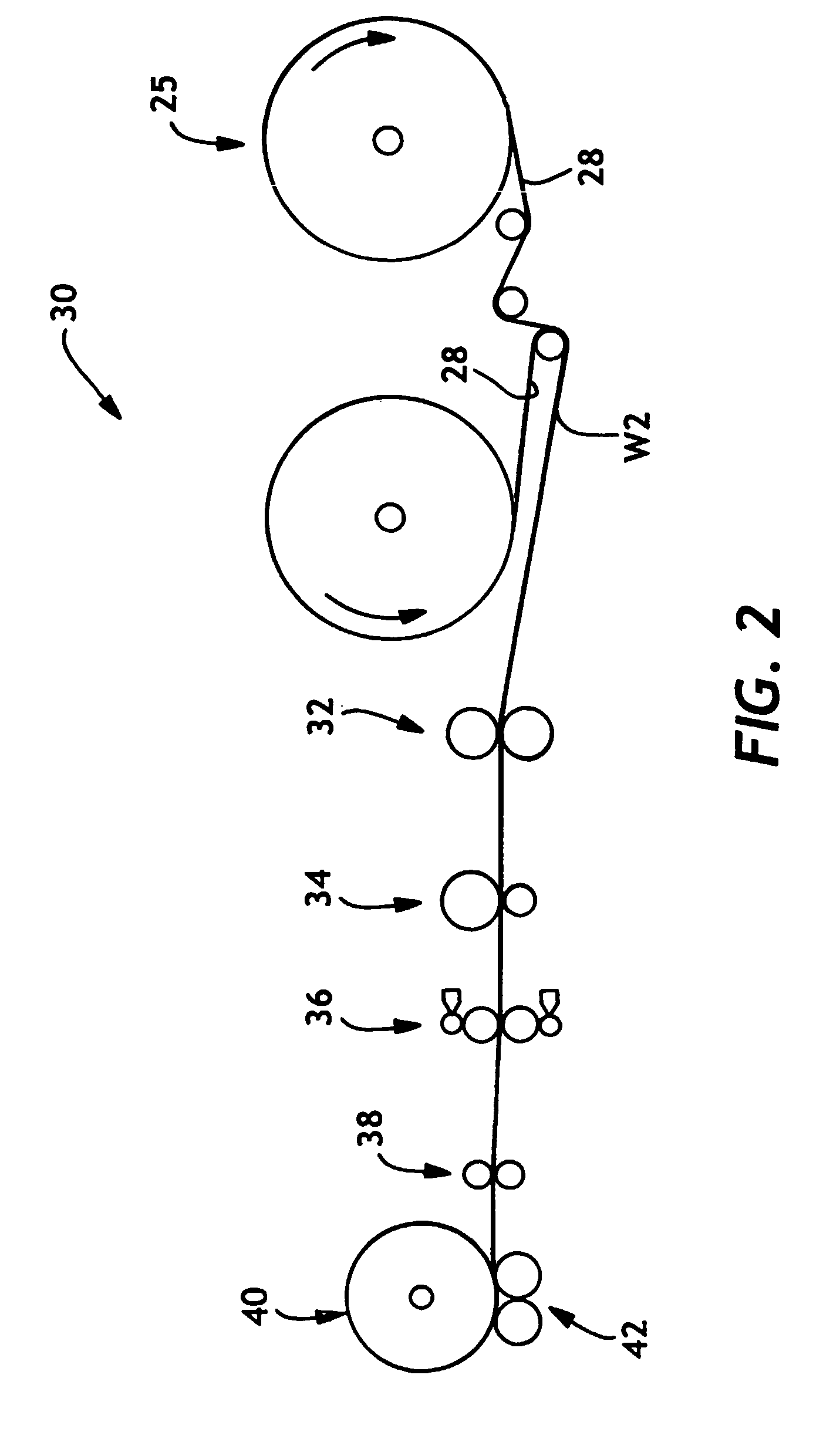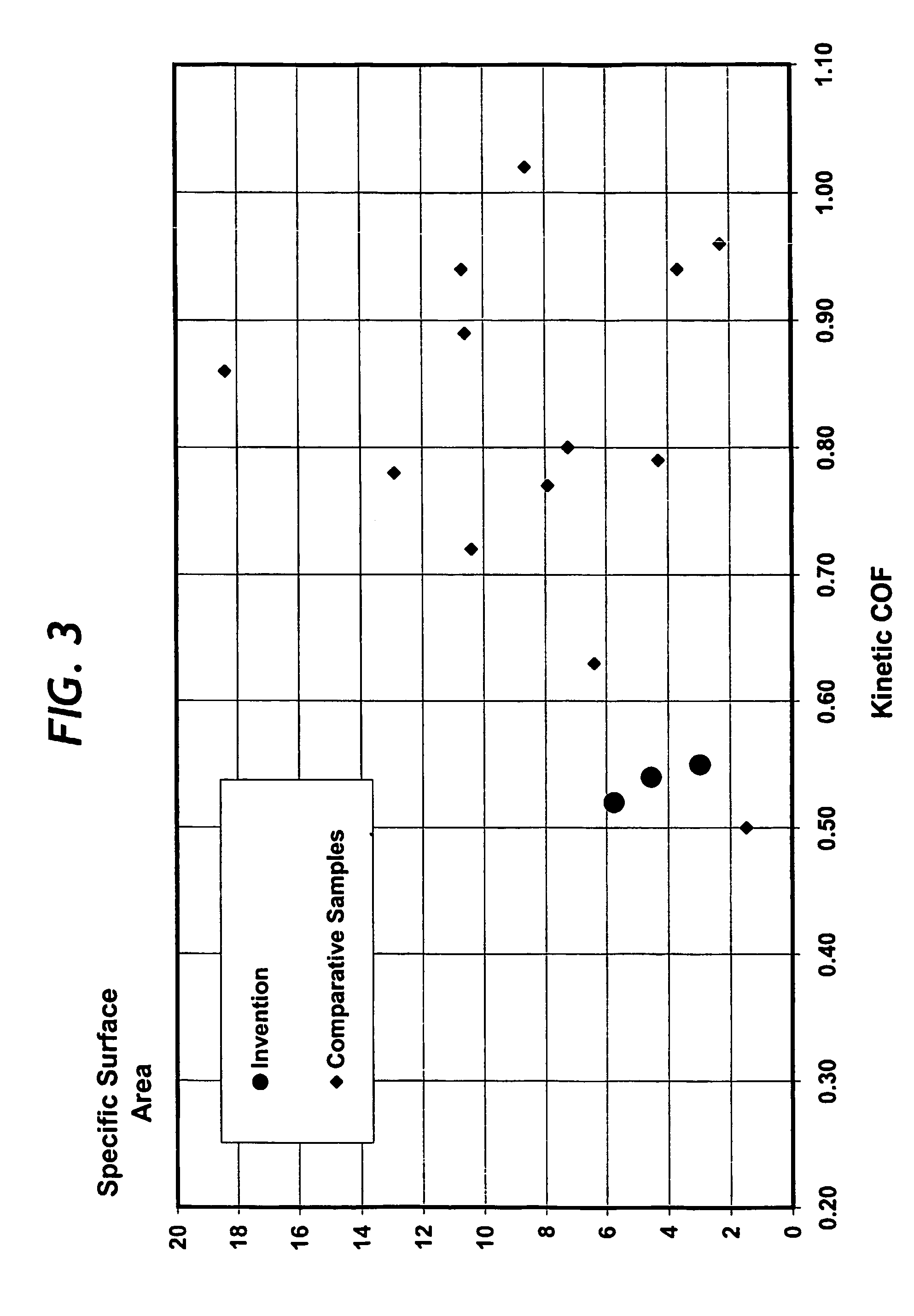Soft paper sheet with improved mucus removal
a soft paper and mucus technology, applied in the field of soft paper sheets with improved mucus removal, can solve the problems that untreated tissue treated with polysiloxane may have a reduced cleaning ability relative to untreated tissue, and achieve the effects of reducing the amount of mucus, and high degree of softness
- Summary
- Abstract
- Description
- Claims
- Application Information
AI Technical Summary
Benefits of technology
Problems solved by technology
Method used
Image
Examples
example 1
[0149]A pilot tissue machine was used to produce a layered, uncreped throughdried facial tissue web with a basis weight of 21.8 grams per square meter per ply, as described in FIG. 1. A furnish of 1000 lbs of bleached northern softwood kraft fiber was dispersed in a pulper for 30 minutes at a consistency of 4 to 5 percent. The stock was sent to a dump chest and diluted to a consistency of 2 to 3 percent and then transferred to a machine chest. The machine chest stock was then passed through a refiner and refined to approximately 550-600 ml Canadian Standard Freeness. This furnish consisted of approximately 20 percent of the sheet, which was placed in the center-layer of the sheet and not in direct contact with user's hands.
[0150]A furnish of 2200 lbs of bleached hardwood kraft fiber was dispersed in a pulper for 20 minutes at a consistency of 10 percent. The stock slurry was sent to a holding chest and mixed with a cationic quaternary imidazoline debonder (Prosoft TQ1003 is commerci...
example 2
[0157]Example 2 was produced using the same machine settings as described in the Example 1, except with the following changes:
[0158]The tissue web consisted of approximately 32 percent of bleached northern softwood kraft fiber, approximately 48 percent of debonder treated bleached hardwood kraft fiber, and approximately 20 percent broke. The broke fiber, of a similar composition to the above furnish, was dispersed in a pulper for 30 minutes at a consistency of 3 to 4 percent. Following the addition of the wet strength resin Kymene, a glyoxylated polyacrylamide dry strength addition (PAREZ 631 NC, commercially available from Cytec Industries, New Jersey) was added to achieve the required tissue web strength. The PAREZ was diluted to approximately 0.86 percent active solids, and was pumped into the stock outlet from the stuffbox by a chemical addition pump at an addition level of 2 kg / MT of dry fiber. The PAREZ addition point was located such that the addition occurred only a few seco...
example 3
[0160]Example 3 was produced using the same machine settings as described in Example 2, except with the following changes:
[0161]The tissue web consisted of approximately 36 percent of bleached northern softwood kraft fiber and approximately 64 percent of debonder treated bleached hardwood kraft fiber. In which, approximately 44 percent of the hardwood was placed in the fabric-layer of the tissue web and in direct contact with user's hands. The rest of the approximately 20 percent of the hardwood was placed in the air-layer of the tissue web and not in contact with user's hands. The debonder addition rate was 4.2 kg / MT of dry fiber. The wet strength resin Kymene was diluted to 6.25 percent active solid and supplied at an addition level of 4 kg / MT of dry fiber. The dry strength additive PAREZ was diluted to 3 percent active solid and at an addition level of 1 kg / MT of dry fiber. The tissue was made at a forming speed of approximately 2,880 feet per minute, at a transfer shoe vacuum le...
PUM
| Property | Measurement | Unit |
|---|---|---|
| Hercules Size Test | aaaaa | aaaaa |
| Hercules Size Test | aaaaa | aaaaa |
| Specific Surface Volume ratio | aaaaa | aaaaa |
Abstract
Description
Claims
Application Information
 Login to View More
Login to View More - R&D
- Intellectual Property
- Life Sciences
- Materials
- Tech Scout
- Unparalleled Data Quality
- Higher Quality Content
- 60% Fewer Hallucinations
Browse by: Latest US Patents, China's latest patents, Technical Efficacy Thesaurus, Application Domain, Technology Topic, Popular Technical Reports.
© 2025 PatSnap. All rights reserved.Legal|Privacy policy|Modern Slavery Act Transparency Statement|Sitemap|About US| Contact US: help@patsnap.com



